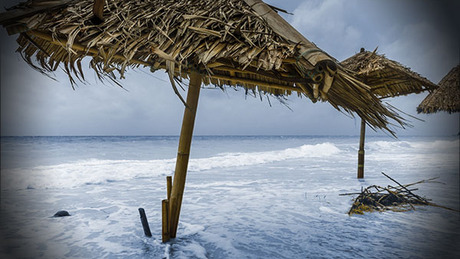Climate change has already taken place, and it will continue to do for the foreseeable future. These changes present important challenges, but also opportunities, for humanity.
The focus of this course will be on adaptation. In other words, we will look at how each country must assess their specific vulnerabilities to climate change, and the tools at their disposal for protecting the well-being, economy, and environment of its citizens.
Examples will be based on Small Island Developing States (SIDS). In such countries economic assets and population density occur primarily in coastal areas. As such, SIDS countries are particularly vulnerable to two of the main predicted changes to occur with climate change: rising sea levels and increased intensity of storms. In some cases, the combination of rising sea levels and exceptional storms can lead to the disappearance of high quality farmlands and the destruction of wetlands and human infrastructure that provide important ecosystem services.
At the end of this course launched by the United Nations Environment Programme (UNEP) and the University of Geneva (UNIGE) in collaboration with the National Adaptation Planning Global Support Programme (NAP-GSP), you will be able to:
- Explain why countries will have to adapt to climate change and provide examples of what this could look like.
- Explain why Small Island Developing States (SIDS) are particularly vulnerable to climate change.
- Outline how to analyse climate risks and discuss why some countries are more vulnerable than others.
- Discuss how adaptation can contribute to sustainable development goals.
And last but not least, you will have the opportunity to create a network and exchange experiences and practices on the SIDS problematic and more largely on climate change adaptation topics.




